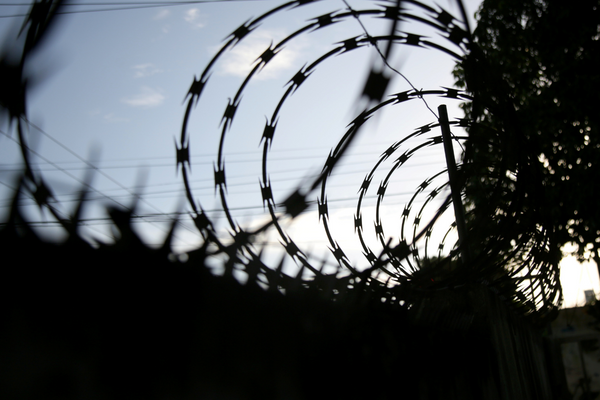Between 30 May – 16 June 2022, Her Majesty’s Inspector of Prisons (HMIP) delivered a comprehensive report on Brook House Immigration Removal Centre. It raised a number of alarm bells about the length of detention, Home Office decision-making and case progression, access to legal advice (in particular in relation to the new Rwanda scheme), and the operation of safeguards particularly in relation to mental health care and Rule 35. It raises concerns that individuals are being denied access to justice and adequate safeguards to prevent wrongful detention.
Length of detention
HMIP identified that many detainees experienced an extremely lengthy period of detention. The inspectors found that the person detained the longest at Brook House had been there for 16 months, although “at the time of our inspection, five detainees at Brook House had spent over 1000 consecutive days in detention, including at other centres or prisons”. HMIP state ‘In the six months before the inspection, 51% of detainees leaving the centre were released into the community after a potentially damaging period of detention.’
The lengthy periods of detention was reported to be due to a number of factors. Slow case progression by the Home Office was widespread, HMIP state ‘Case progression was slow for many detainees and the length of detention remained unacceptably long in some cases…The Home Office will need to be more active, processing cases more quickly, keeping detainees informed and where possible releasing them into the community. A reduction in the overall numbers of detainees would mean the centre would feel safer and quieter and there could be more activities on offer. HMIP found slow case progression had a direct connection to the deterioration of detainees’ mental health: ‘much of the frustration, anger and anxiety we found among detainees was due to delays in the Home Office processing cases and failing to provide sufficient information about progression or decisions’.
Crucially the lack of suitable bail accommodation was another contributing factor to the length of detention. HMIP found that ‘22 detainees had been granted ‘bail in principle’ but had not been released because of a lack of suitable accommodation. Some of the detainees who were waiting for accommodation were considered by the Home Office to be vulnerable, including one who had been assessed as a level 3 adult at risk. The longest wait for release accommodation at the time of our inspection was five months.’ HMIP further stated ‘The continued lengthy detention of people granted bail because of a lack of accommodation was unacceptable.’ Many of BID’s clients are forced to wait for weeks and months in detention after the judge has granted ‘bail in principle’ due to the Home Office's failures of providing suitable accommodation.
HMIP also found that delays in obtaining travel documents also contributed to lengthy detention, HMIP states that ‘In one instance, there was no recorded progress on obtaining travel documents for 11 months, and the detainee involved had been held in a prison for this duration. The detainee who had been held for 16 months continued to be detained despite the Home Office having failed to secure an agreement from his home country to remove him.’
HMIP also found that many individuals with outstanding asylum claims who were held in detention experienced a longer wait for the Home Office to assess their claims, consequently keeping them locked up for longer. HMIP states ‘The Home Office also sometimes took too long to consider detained asylum claims (claims that are made by individuals held in detention). In one case, it took almost a year to resolve a claim for a man held in detention, and in another it took over a month for a detainee to have an initial screening interview after making an asylum claim’.
Lack of safeguards around health and well being
HMIP found that the majority of detainees explained they suffered from some form of mental health problem. It is clear there are extensive failures and lack of safeguards for maintaining and caring for those detainees suffering with mental health problems. HMIP identified a number of problems including staff shortages; lack of resources; low standards upon arrival for health screening; and a lack of risk management identification.
HMIP criticisms of the system in place for health safeguards is extensive ‘Health care facilities were cramped and there were not enough private consultation areas to deliver care effectively. Health care suffered negatively from severe noise pollution from the gym and one of the wings. Services were fragmented and mental health and substance misuse services were on opposite sides of the centre. The standard of cleaning was not always acceptable and some clinical equipment was not fit for use, for example the examination couch in the treatment room’.
BID is saddened to read that ‘80% of detainees said they had felt depressed at Brook House. However, there was no capacity to offer psychological interventions to the large number of detainees with lower-level mental health needs, and there was no befrienders scheme to support them.’ HMIP further states that ‘28% of detainees said they had felt suicidal at the centre. There had been 33 recorded self-harm incidents in the last six months’. In the last year 95 people had been placed on constant watch because of risk of suicide.
In particular there were widespread criticisms by the HMIP regarding the lack of safeguards for detainees suffering from mental health issues, as a large number of those who needed it were receiving no psychological support at all. HMIP states ‘There were not always sufficient, qualified health care staff deployed in primary health care and to provide appropriate mental health and psychological support to detainees…All the psychology posts were vacant and were not being covered. There was no counsellor in post. As a result, patients with conditions, such as depression and anxiety, where the evidence called for psychologically informed treatment, were not having their needs met. Similarly, patients with post-traumatic stress disorder, which was often complex, could not access the evidence-based treatment a psychologist would deliver. Given the needs of the population, this was of great concern’. HMIP continues stating that nurses expressed their frustration at their inability to arrange psychological interventions.
HMIP further criticise the safeguards surrounding assessments of detainees mental health stating ‘Assessment, care in detention and teamwork case management for detainees at risk of suicide or self-harm was not good enough. Assessments were sometimes very brief and care maps lacked detail. Health care staff and Home Office attendance at reviews was poor, and interpretation was not consistently used’. Upon arrival in detention, HMIP found that information about detainees ‘medical needs, vulnerabilities and disabilities was not always provided in the movement documentation, particularly when detainees had arrived on small boats.’ Staff handovers were also found to sometimes be poor, resulting in important information about detainees’ welfare potentially not being communicated.
Lack of safeguarding for Adults at Risk.
The Home Office has safeguards in place that are intended to prevent the wrongful detention of vulnerable adults. Those safeguards have a number of failings which have been well documented. Under the Rule 35 process, the doctor can notify the Home Office of an individual’s vulnerability, history of torture or risk of suicide, so that the appropriateness of detention can be reviewed in the light of that evidence. HMIP found that ‘The Rule 35 report process was not being used to its fullest extent to protect detainees who had conditions that might have been worsened by detention. Nearly all reports related to potential victims of torture and very few were prepared for detainees with health problems or suicidal ideation.’
HMIP criticised the quality of Rule 35 reports, as well as Home Office decision-making in response: ‘The reports were variable – some failed to assess the impact of continued detention and others that discussed physical injuries did not contain body maps. Home Office responses were timely and judgements were clear. In our sample, torture was accepted in 12 cases, but detention was maintained for six of these detainees, despite the acknowledgement that they were at risk of harm’. HMIP also found that there was a wait time of two to three weeks for Rule 35 assessments.
HMIP states that three detainees had been assessed as level 3 adults at risk under Home Office policy (where there was professional evidence demonstrating that ongoing detention was likely to cause the detainee harm). Of the three, ‘one was released during the inspection, but the other two continued to be held in the centre, despite the Home Office recognising that they were highly vulnerable. One of the latter had been granted bail in principle in March 2022, but a lack of accommodation meant he had been held in the centre for almost three months after being bailed. He had a child who was being looked after by social services, and his mental health had declined significantly since being detained. While he was receiving good care, the delay in the Home Office finding him suitable accommodation risked exacerbating his vulnerabilities.’ This case is extremely concerning and once again demonstrates how the Home Office continues to keep extremely vulnerable individuals detained despite its own assessments raising continuous concerns.
Data sharing on individual detainees between Serco and the Home Office was found to sometimes fail. This is particularly worrying when it related to individuals who had been assessed as level 3 adults at risk. HMIP found that the ‘the Home Office had not informed centre staff for several months about a detainee being assessed as a level 3 adult at risk, which meant he may not have received the support he required. In another case, a detainee was recorded as being a level 3 adult at risk in Serco records while the Home Office continued to record him at level 2 (where there is professional evidence that a detainee is particularly vulnerable to harm in detention, for example due to a history of torture, trafficking or mental illness)’.
Increase in people being detained leading to deterioration of living standards
The report found that the population of detainees ‘had increased considerably in the last few weeks’ leading to far more crowded conditions which effected the wellbeing of detainees. At the time of the inspection, there had been a recent influx of 68 people detained facing removal to Rwanda. HMIP states that ‘a recent rise in detainee numbers had exposed the limitations of the centre’s infrastructure…The centre was crowded and noisy, ventilation in cells was inadequate and the prison-like environment was one of the main reasons that detainees gave for feeling unsafe.’
HMIP found that ‘the lack of mobile phone signal across the site meant that detainees struggled to make calls, adding to their sense of isolation and uncertainty…this caused problems when detainees wanted to phone families, friends, or legal representatives while they were locked in their cells’.
Lack of Legal advice
HMIP found that there was a serious lack of access to justice and legal support for detainees. Many people were confused or unaware of the state of their immigration case, particularly those who had been given a notice of intent to be sent to Rwanda.
HMIP states ‘DET (The Home Office detention engagement team) was now conducting between 100 and 200 in-person engagements a week. The DET also saw each detainee during their induction. Despite this, in our survey, only 37% of detainees said that the Home Office was keeping them up to date with their cases. Many told us this was because the DET was unable to offer them meaningful updates. Others said that, while Home Office staff routinely provided them with monthly detention updates, these were often unhelpful, and it was difficult to obtain answers to ad hoc queries.’
In relation to the Detention Duty Advice Scheme (DDA), the HMIP found that while some detainees ‘could access this scheme, they had to speak to several solicitors before finding one who agreed to take on their case’. This results in longer waits and uncertainty.
HMIP found widespread failures in providing access to justice for detainees who had been told they were to be removed to Rwanda. At the time of the HMIP inspection, 68 detainees in Brook House had been told that the Home Office was considering their removal to Rwanda. Of these, 19 had been served with removal directions for a flight scheduled during the inspection. HMIP states, these 68 individuals ‘found it difficult to access their legal rights and had been given inadequate information. They had difficulties in responding to the notice of intent to remove them within the seven-day window and problems obtaining or communicating with legal representatives. The information provided to detainees who had been told they were to be removed to Rwanda was of little value’.
The report repeatedly emphasised the profound failures to support detainees ‘Detainees due to be removed to Rwanda were anxious for more information. The Home Office held two poorly organised surgeries, where no interpreters were used. Translated versions of two information leaflets were not sent to detainees until after their removal directions had been issued. Both leaflets provided little useful information about the removal process and what to expect on arrival. The Home Office was not aware of a detainee who said that he could not read in any language and had not understood the documents he received’.
HMIP also highlighted that ‘Staff had not been adequately briefed on the operation to remove detainees to Rwanda, which left them poorly placed to support detainees who were affected.’ HMIP goes on to state the lack of staff understanding meant that they 'were unable to reassure the men or answer their queries’. However, people facing removal to Rwanda were dependent on uninformed staff for support: ‘Detainees were largely reliant on centre welfare staff to find legal representation and faced challenges in communicating with legal representatives. One detainee told us he did not know that he might be sent to Rwanda until he spoke to a lawyer. Another understood that he needed to reply to the notice of intent within seven days but described his escalating panic as he could not speak to a lawyer as the window drew to a close. In another case, a detainee only obtained a lawyer to represent him on day six of the seven-day window. In the cases we looked at, no detainees had replied to the notice within the seven-day window or before the decision to issue removal directions.’
HMIP further criticises the Home Office’s decision-making on serving notices of intent, including a manifest failure to consider the welfare of children affected. In a sample of five cases ‘Two detainees had extended family in the UK and two had young children in their home countries. The Home Office had not considered the welfare of the children in these cases. We could not find any evidence showing that the Home Office had assessed whether family reunification in Rwanda was possible and an assessment of Rwanda’s capacity to accommodate children was yet to be undertaken. Initial asylum screening interviews were too brief and none of the records we examined showed that detainees had an opportunity to disclose their sexual orientation or gender identity, nor was there a prompt for this issue during the DET induction, despite the Home Office guidance on Rwanda describing reports of human rights violations against LGBT individuals’. In 3 cases out of the sample of 5, HMIP states that a Rule 35 report had been submitted, two of which related to torture and one to medical grounds, with all three detainees classed as level 2 or 3 adults at risk. In all cases detention was maintained.
Further abuse of rights
HMIP reported several instances where individuals’ rights were potentially abused including prolonged solitary confinement and segregation. HMIP stated that ‘Detainees were inappropriately locked in cells overnight. They could have been left unlocked if they had been given a key to their cell and if there had been sufficient staffing at night.’ HMIP further criticised the use of segregation: ‘we looked at two cases where the justification for separation was poor, both involving the segregation of the victim of an assault. It was a concern that the unit had held a number of detainees with poor mental health, including at least one who was considered unfit fit for detention’.
HMIP found that in the last six months, staff had used force on 105 occasions, and ‘in at least one case, force was used against a detainee who was not fit to be detained’.
HMIP criticises the system in place to monitor equality and diversity potentially leading to discrimination, stating ‘Equality work was underdeveloped. Data collection on equality and diversity was not systematic and there was a lack of investigation and action in areas where there might have been evidence of unfair outcomes’.
Conclusion
These findings once again lay bare the excessive use of detention; the poor quality of Home Office decision-making; the failure of safeguards designed to protect people; mistreatment of vulnerable people; and basic flaws regarding the operation of the Rwanda policy. In the course of our casework we bear witness to these problems and the harm that they cause on a daily basis. They are the product of a system that is systemically flawed. Regrettably, instead of giving meaningful consideration to this report and the many others that have consistently raised such concerns, the government has announced plans to spend £400 million on 1,000 new immigration detention places.









